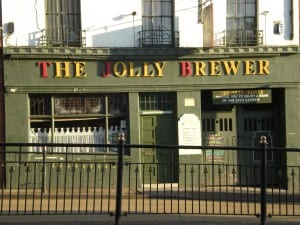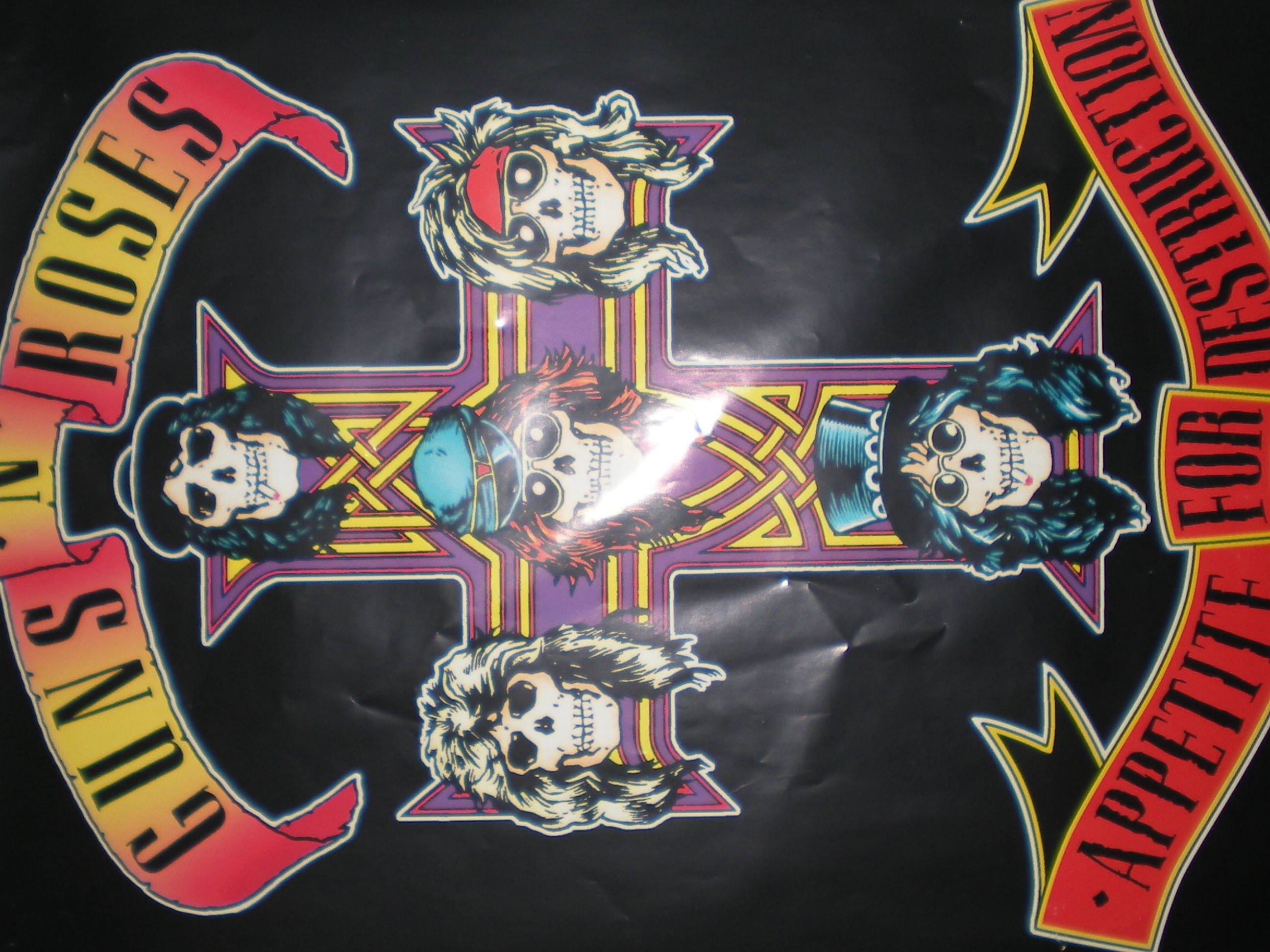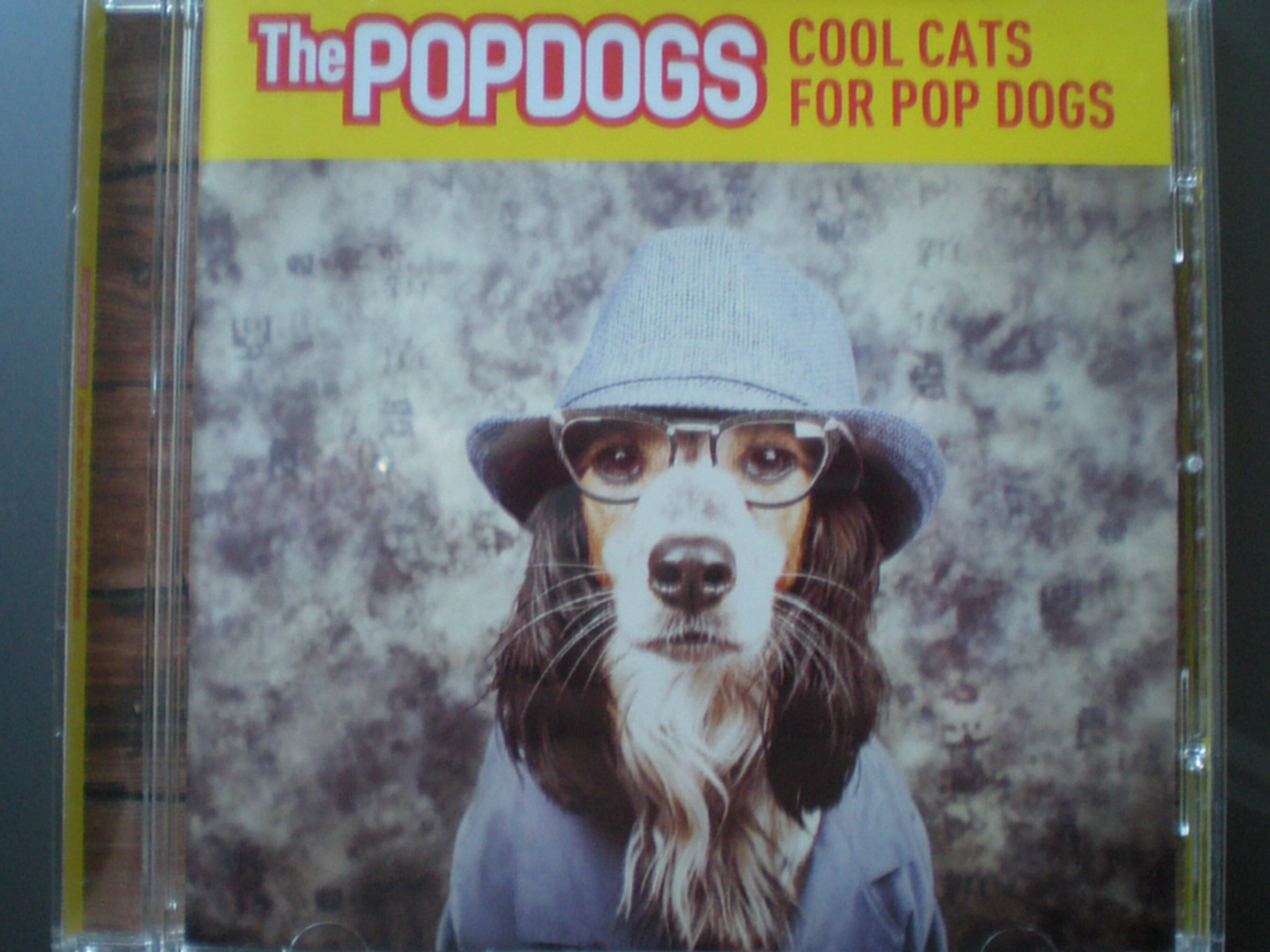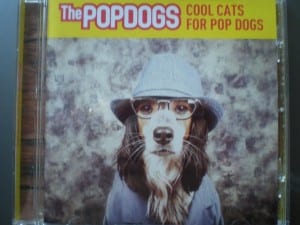Very few bands have had as turbulent a history as Guns n’ Roses. In the golden years of Guns, which were indisputably the late 80’s up until the very early 90’s, their wild and tempestuous nature earned them the nickname “The Most Dangerous Band In The World”. They were the dark horse of the Hollywood rock scene – not quite glam rock, not quite punk rock, but hell bent on creating their own unique sound.
Los Angeles was the place where Guns n’ Roses began their epic rise to international stardom, and in a small rehearsal space in the seediest, most decadent corner of L.A, they practiced a selection of songs that would soon form one of the greatest Rock n’ Roll albums ever conceived.
And on July 21, 1987, it was born.
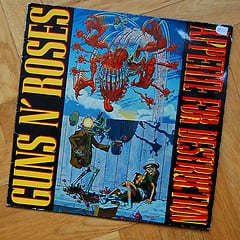
Appetite For Destruction vinyl album cover, with Slash’s original artwork.
Photograph by Henrik Djärv
Ironically enough, the album was not an immediate hit. Sure, it racked up plenty of sales figures, but they were by no means instantaneous. However, sales of the album picked up pace when GNR started playing more and more of the album live, and now it’s sold more than 28 million copies worldwide, and hit platinum in the U.S.A not once, not twice, but EIGHTEEN times.
The album encompasses twelve classic tracks, including the globally renowned “Sweet Child O’ Mine”, “Welcome To The Jungle” and the lesser known but equally brilliant “Think About You”. Some might even say that this is a greatest hits album in itself. Every song is as raw and evocative as the one preceding it, and every member of the band is joined in a glorious unification of debauchery, passion and rage. This was the period of time before GNR began coming apart at the seams – before drugs and alcohol had sunk their claws deeper into the band, and before they knew how each of them would react to super-stardom.
At this point the comradery was unbreakable – you can almost hear it in the music. This is one reason why the album stands out as one of the greats. They were there for each other through thick and thin, and without any strife or friction between each member, they were a real hot prospect in 80’s Hollywood.
In my opinion, their bonds to each other brought out some of their finest qualities. Duff Mckagan’s basslines are expertly crafted, with that unique bass tone, he sticks to drummer Steven Adler like glue. Between them they create a rythmn section that is somehow both aggressive and groovy at the same time.
How they managed that, I have no idea.
Axl’s trademark wail is, as we know it can be, banshee-like in it’s volume and range. Slash’s guitar playing also seems subtly more vibrant and bluesy than his later work, and Izzy was there behind the scenes making the songs work with his superlative songwriting talents and well-placed guitar chops.
Of course this album is, in a strange way, the pride before the fall – it put them in the brightest spotlight, a place that they were doomed never to leave until the each member of the band slowly dispersed throughout the 90’s. Nevertheless, Gun’s n’ Roses continue to make great music to this day, and in the later years, although tensions in the band could run high at times, the music never really suffered.
Because in the eyes of GNR, and the eyes of all us religious fans, the music is what matters.


